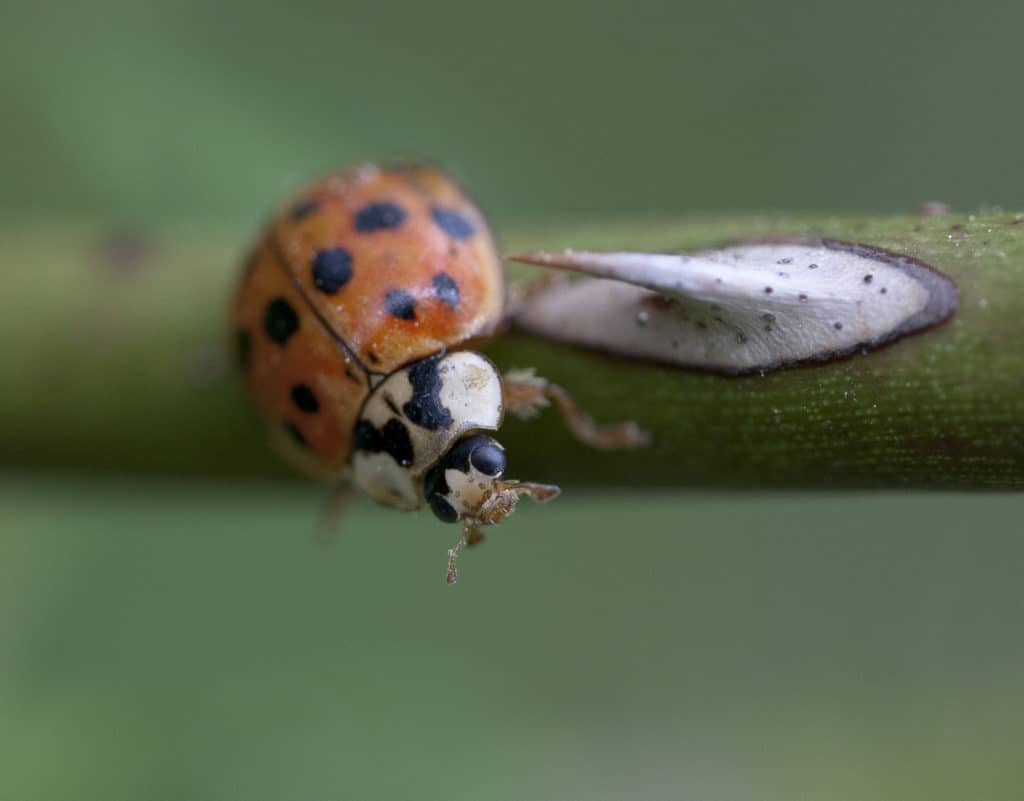Creature Feature: The Helpful Ladybug

The current call for social isolation is a great time to put your energy into gardening and yard work. As you do, look for emerging helpful insects. One of my favorite insects it the ladybug.
Ladybugs, or ladybird beetles, are colorful helmet-shaped creatures beloved by children and encouraged to multiply by farmers.
I find that they have spunk and character. When I try to take close-up photos of them, they sometimes slip away or stand their ground posing or sometimes they will attack the lens. When I persist to get the photo, they will usually take flight.
Because they hibernate, they are one of the earliest bugs found in springtime. Ladybugs have a life cycle similar to a butterfly. After eating a lot of spring bugs, females will lay up to 300 eggs. In a couple of weeks, the larval stage will hatch and immediately start doing what they do best, eating aphids. The larval-stage bug is dark with yellow spots and is the shape of a straightened comma with legs but no wings. Their wings don’t develop until after they emerge from a pupal stage.
The pupal stage starts after the larva eats enough aphids to store the energy to transform into that cocoon-like stage. After a week or so an adult ladybug emerges through the pupal shell.
The adult has a delicate folded wing structure and a hinged shell that covers the wings. It has sensitive antennae for locating aphids and fairly good eyesight. After maturing over the summer many will look for places to make a dried grass nest to spend the winter. Wintering spots are frequently around houses, in the eaves and windows.
Several species of ladybugs are migratory. One species in California migrates in such numbers that the clouds of bugs are visible on radar.
Farmers love ladybugs because they eat aphids, tiny bugs that suck the juices out of tender shoots of plants. They can kill plants or render them so weak that they are unable to flower or bear fruit. Over its two-year lifespan a ladybug could eat over 5000 aphids.
Ladybugs do have some predators. The worst are parasitic wasps which develop inside the ladybug host, eventually killing it. Birds and reptiles are not too fond of ladybugs as they seem to taste bad.
Pesticides are the major killer of ladybugs. Avoiding their use helps protect these beneficial insects. Spraying water and dish detergent at a mildly high pressure several times a week will decrease aphids and makes them lose their grip on plants. Let the lovely ladybugs do their job in the garden.
